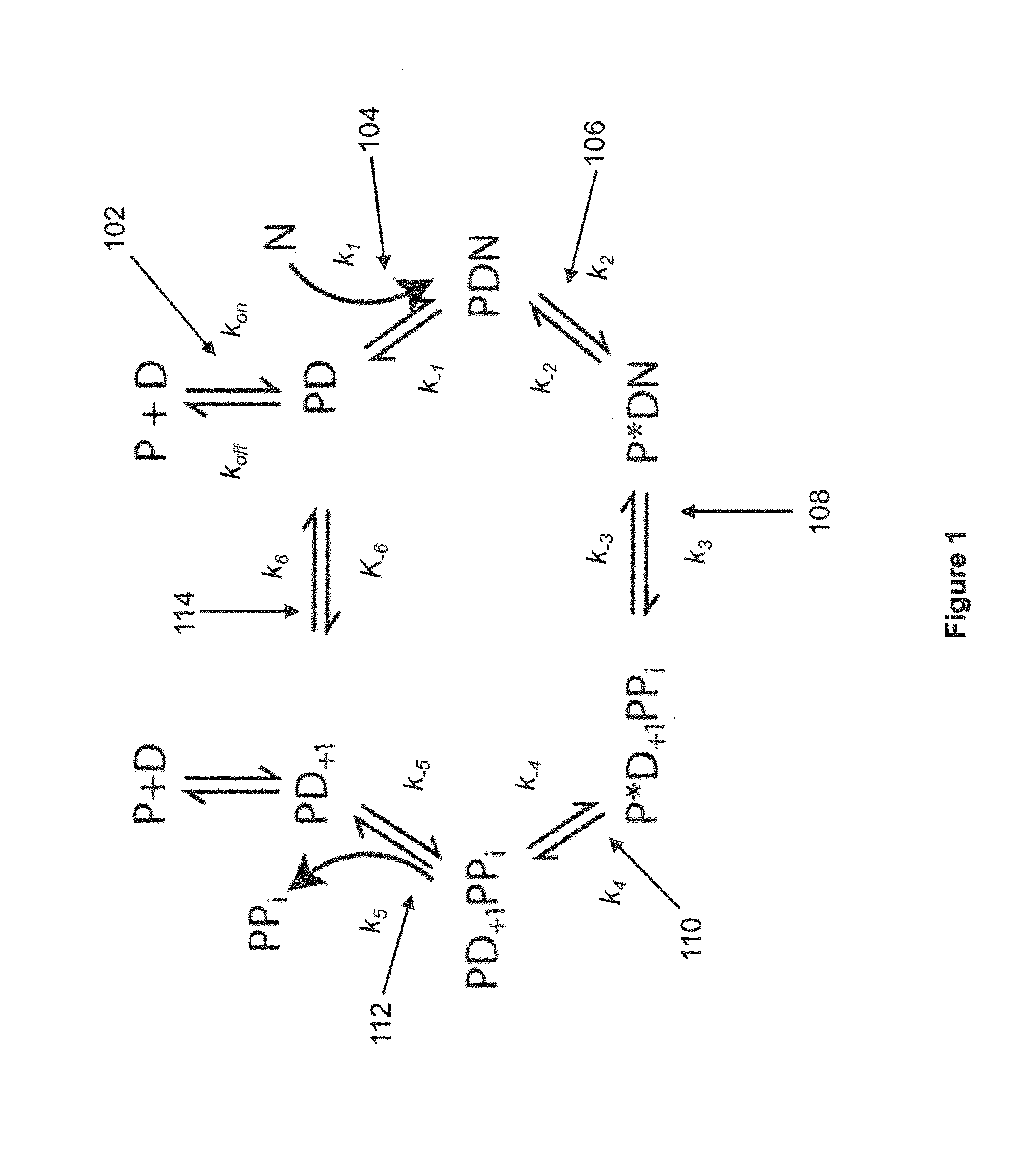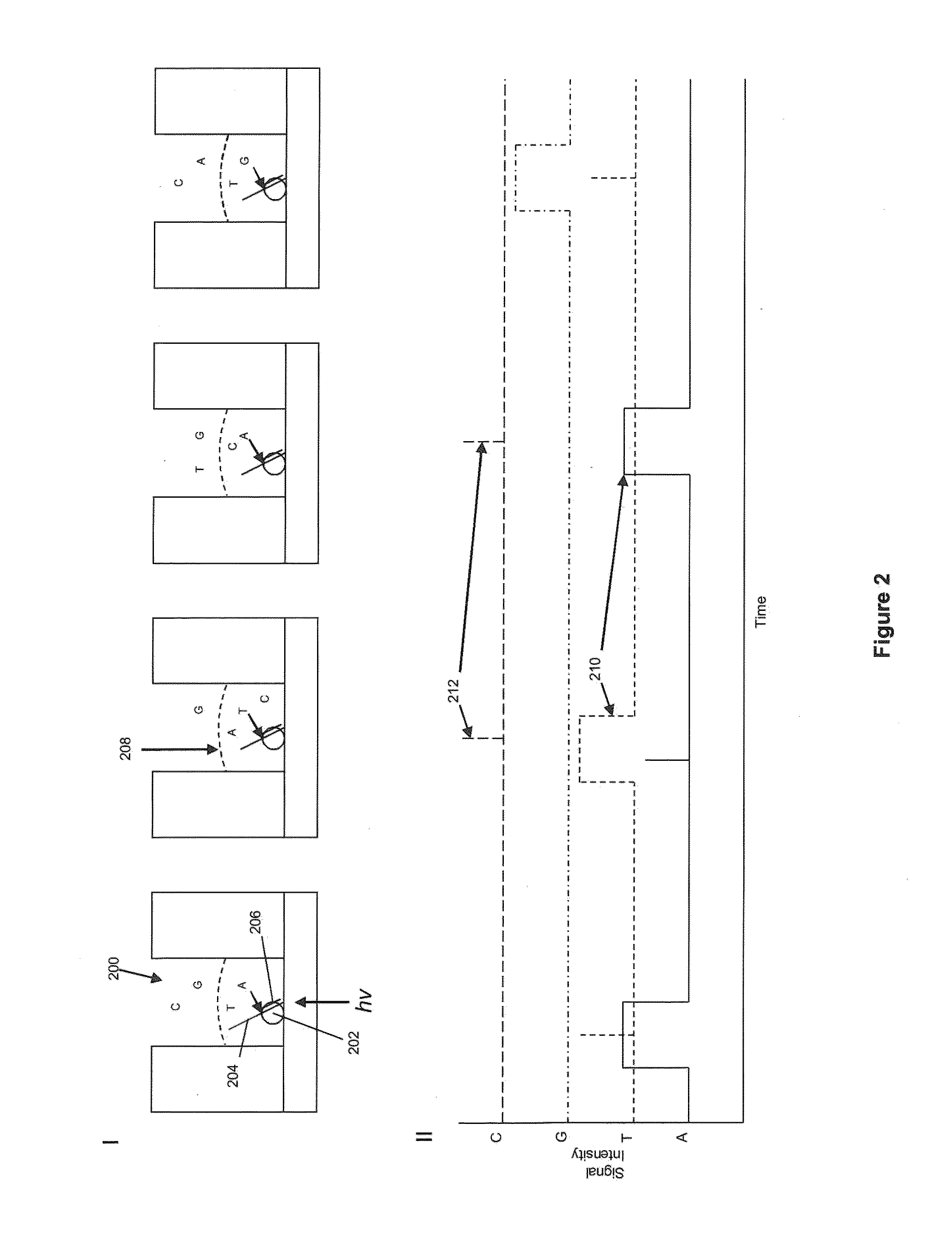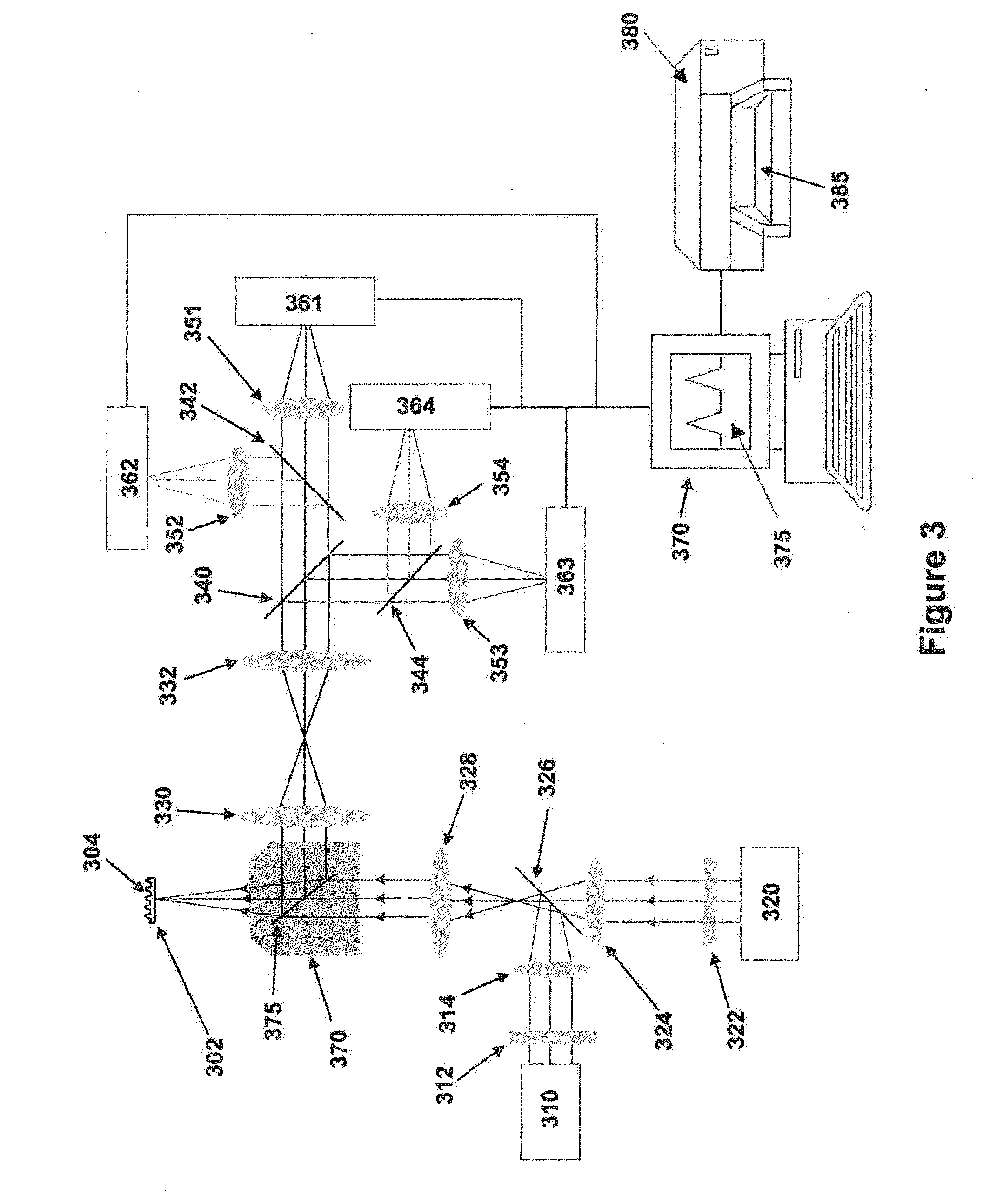Sequencing reactions with alkali metal cations for pulse width control
a technology of alkali metal cations and sequencing reactions, applied in biochemistry apparatus and processes, organic chemistry, fermentation, etc., can solve the problems of time-consuming and extremely costly methods, and achieve the effect of modulating the kinetics of polymerase enzymes and improving sequencing accuracy
- Summary
- Abstract
- Description
- Claims
- Application Information
AI Technical Summary
Benefits of technology
Problems solved by technology
Method used
Image
Examples
example 1
Single-Molecule Sequencing in Zero-Mode Waveguides with Li+
[0146]Sequencing reactions are carried out in a zero-mode waveguide array having 3000 discrete cores. The reactions are observed using a highly multiplexed confocal fluorescent microscope providing a targeted illumination profile, e.g., a separate spot for each core (See, e.g., U.S. patent application Ser. No. 12 / 151,979, filed May 9, 2008, and incorporated herein by reference in its entirety for all purposes). Fluorescent signals from the various ZMWs are detected on an EMCCD camera for 5-7 minutes, and are subjected to pulse recognition and base calling processes (See, e.g., Published U.S. Patent Application No. 2009-0024331, and incorporated herein by reference in its entirety for all purposes). The sequencing was carried out as described in Eid, J. et al., Science, 323(5910), 133-138 (2009) and corresponding supplemental information.
[0147]For each of the sequencing reactions the laser power was 1.25 μW / μm2 and a camera f...
example 2
Single-Molecule Sequencing in Zero-Mode Waveguides with Na+
[0155]Sequencing reactions are carried out as described in Example 1, but various amounts of Na+ were present. Na+ was added in the form of sodium acetate. In one set of experiments, four reactions were carried out, a control with no added Na+, and the other three having 5 mM, 10 mM, and 20 mM of Na+ respectively. Table 3 shows data for pulse width, interpulse distance, read length, and accuracy for a set of sequencing experiments. The pulse width and interpulse distance are shown for each of the four channels corresponding to the four nucleotide analogs.
[0156]
TABLE 3PW, IPD, Read Length, and Accuracy at various [Na+] concentrations[Na+]PW1PW2PW3PW4IPD1IPD2IPD3IPD4RLAccmMsecsecsecsecsecsecsecsecbases%cntrl0.0880.0840.0800.1090.5840.7680.6020.49357687.1250.1030.0940.0930.1280.5610.7580.5610.48252088.25100.1220.1080.1090.1450.6340.7910.6210.57748488.37200.1500.1270.1290.1660.6130.8850.6160.51748889.09
example 3
Single-Molecule Sequencing in Zero-Mode Waveguides with Na+ and Li+
[0157]The experiments described above show that Li+ and Na+ have similar effects on pulse width, but that the amount of Na+ required for a similar effect is about 40 times higher than the amount of Li+. Single molecule sequencing runs were carried out as described above having both Li+ and Na+, and the experiments showed that Li+ and Na+ can be used together, and that the effects of the two salts together was cumulative.
PUM
| Property | Measurement | Unit |
|---|---|---|
| ionic strength | aaaaa | aaaaa |
| ionic strength | aaaaa | aaaaa |
| ionic strength | aaaaa | aaaaa |
Abstract
Description
Claims
Application Information
 Login to View More
Login to View More - R&D
- Intellectual Property
- Life Sciences
- Materials
- Tech Scout
- Unparalleled Data Quality
- Higher Quality Content
- 60% Fewer Hallucinations
Browse by: Latest US Patents, China's latest patents, Technical Efficacy Thesaurus, Application Domain, Technology Topic, Popular Technical Reports.
© 2025 PatSnap. All rights reserved.Legal|Privacy policy|Modern Slavery Act Transparency Statement|Sitemap|About US| Contact US: help@patsnap.com



